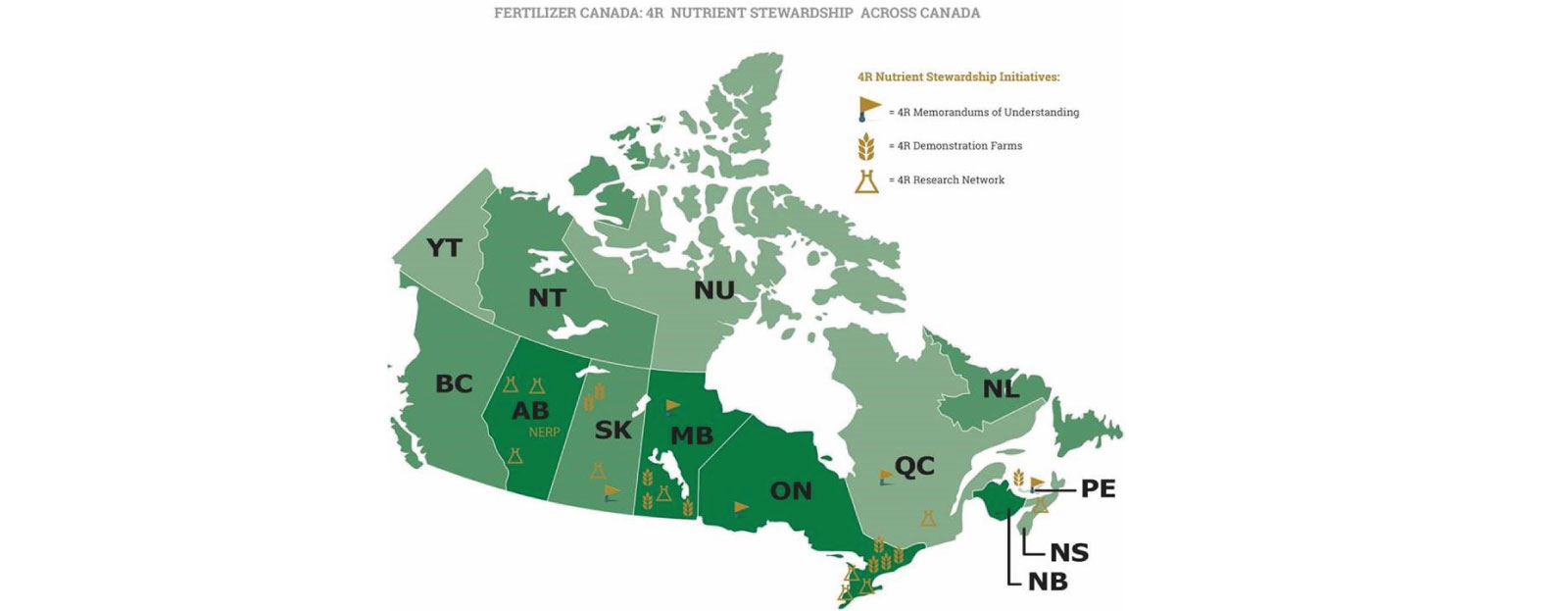Clyde Graham recently spoke about how Fertilizer Canada is working in partnership with ag retailers, several programs and partnerships to promote sustainability.
New regulations in the fertilizer industry have made it easier to register new products and have also streamlined the re-registration process. “Fertilizer Canada has worked alongside industry associations and government officials from the Canadian Food Inspection Agency for nearly a decade to update the Fertilizers Regulations,” says Mr. Graham, “These updates will ensure that our industry is able to provide innovative fertilizers to farmers, harmonize our processes with internal jurisdictions, and continue to prioritize the safety of our consumers. We’re committed to advocating for regulations and programs that allow the agriculture sector to remain globally competitive in this new, more difficult operating environment.”
Canada’s fertilizer industry is one of the most environmentally proactive, with 3.7 million acres of farms applying for 4R Nutrient Stewardship. Fertilizer Canada has goals of increasing that number to 15 million acres by 2025 as part of a 5-year strategic plan, the organization is also working with the agri-retail sector to ensure that ammonia fertilizer is used safely. This is done through auditing approximately 400 facilities and conducting 5-year reviews that post proposed changes to Fertilizer Canada’s website.
Ag retailers in Canada have been successful, providing good jobs and economic stimulus across the country, and Fertilizer Canada’s partnerships with CAAR and OABA highlight the socioeconomic impact of agri-retail in rural Canada.
Looking ahead, it will be beneficial to be more efficient with fertilizer use and reduce nitrous oxide emissions from fertilizer applications. With technical and scientific experts, Fertilizer Canada is working to see the industry-led 4R Climate Smart Protocol adopted within federal and provincial offset systems to provide Canadian growers with offset credit opportunities.
Who is Fertilizer Canada?
Fertilizer Canada represents manufacturers, wholesale and retail distributors of nitrogen, phosphate, potash and sulphur fertilizers. The fertilizer industry plays an essential role in Canada’s economy, contributing over $23 billion annually and employing 76,000 workers throughout the supply chain. In order to remain globally competitive, we are committed to supporting our industry with innovative research and programming. We take pride in advocating for sustainability, stewardship, safety and security through our industry-leading standards and Codes of Practice. As the foundation of Canada’s agri-food sector, we apply innovative solutions that positively impact the environment, the economy, and the social fabrics of Canadian life.
Related Articles
- Rage against the European Union Although the weeks-long protest and blockades in France may have halted on February 1, 2024, farmers in other European countries have taken up the cause with their protests. By Andrew Joseph, Editor Like a revolu...
- 5 agricultural technology trends to watch in 2024 As more Canadian farmers are accepting of new technologies over ye olde tried and true, look at some ways more AgTech can improve the sector’s lot. By Ron Baruchi, Chief Executive Officer, Agmatix Over the past ...
- Keepin’ it real Some advice on how the ag community can maintain its workforce well. By Ainsley Andres According to new labour market data from the Canadian Agricultural Human Resource Council (CAHRC), agriculture in Canada, inc...
- Valued Ag Associations Why do agricultural associations exist? By Mitch Rezansoff, Executive Director Why do agricultural associations exist? The period of COVID lockdowns accompanied by economic disruptions forced many within the ag i...
- Sollio Agriculture opening new plant in Ontario In Mid September, Solio Agriculture inaugurated CRF Agritech in St. Thomas, Ontario. CRF stands for controlled-release fertilizer. The project was launched in 2021, and required an investment of over $25 million. ...
 How to resolve AdBlock issue?
How to resolve AdBlock issue? 
Join the discussion...
You must be logged in as a CAAR member to comment.
Report
My comments